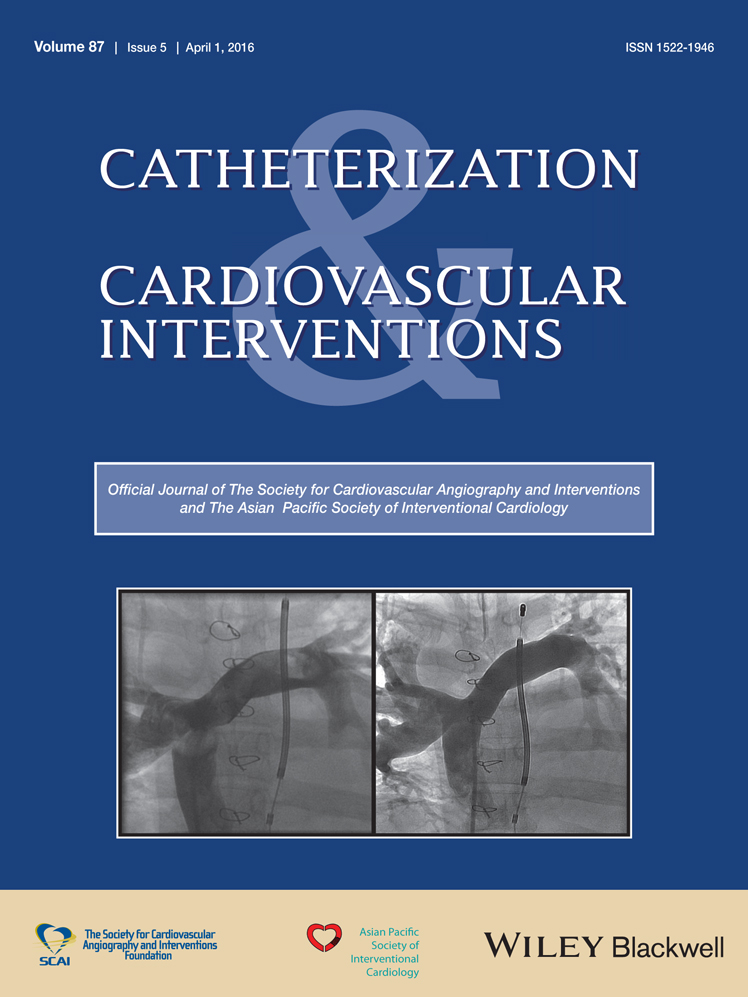Clinical outcomes following target lesion revascularization for bioresorbable scaffold failure
Conflict of interest: Dr. Latib serves on the advisory board for Medtronic. All other authors have reported that they have no relationships relevant to the contents of this paper to disclose.
Abstract
Objectives
To investigate clinical outcomes following target lesion revascularization (TLR) for bioresorbable scaffold (BRS) failure in a real world population.
Background
BRS has become a new option in percutaneous coronary intervention, and may be potentially advantages because of the absence of a permanent metallic cage and the possibility for restoration of vasomotion and endothelial function. However, the requirement for TLR following BRS has been reported, but data on outcomes following reintervention are currently lacking.
Methods
Eighteen patients (20 lesions) who underwent TLR for BRS failure were identified at two high-volume centers in Milan, Italy. Clinical outcomes including all cause death, myocardial infarction, and repeat TLR after TLR for BRS failure were examined.
Results
The type of scaffold failure at TLR was classified into focal pattern in 15 lesions, diffuse pattern in two lesions, restenosis at side branch ostium in one lesion and scaffold thrombosis in two lesions. TLR was treated with plain old balloon angioplasty (POBA) in two lesions, with drug-coating balloon in three lesions, drug eluting stent implantation in 11 lesions, further BRS implantation in four lesions. During the followup (median: 345 days after TLR), one sudden death and three repeat TLRs were observed.
Conclusion
In our series, we observed an adverse event rate of 20% of during the followup period following TLR for BRS failure. The optimal treatment option for these patients remains to be determined. © 2015 Wiley Periodicals, Inc.




